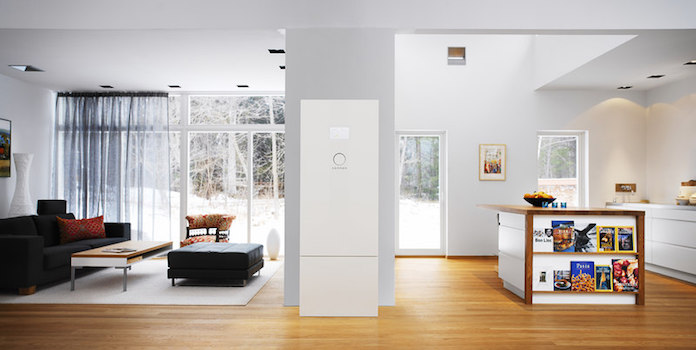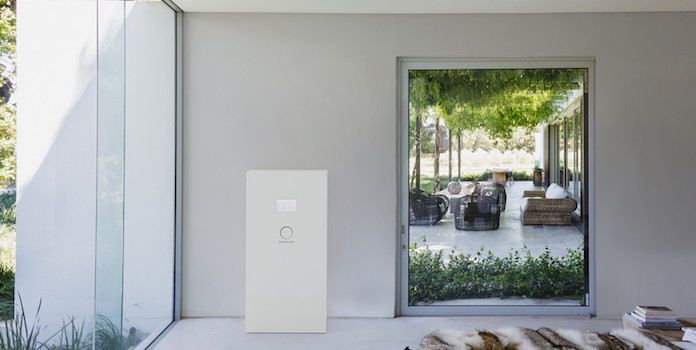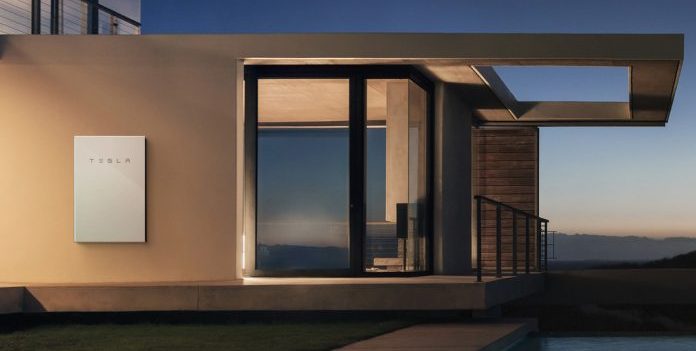How Much Does the sonnenBatterie Cost?

How much does the sonnenBatterie cost compared to Tesla’s Powerwall?
With the German battery storage manufacturer sonnenBatterie entering the US market and announcing a new, low-cost option for the US, interest in their products seems to be gaining traction on this side of the Atlantic. Let’s take a look at who sonnenBatterie is, how much sonnenBatterie costs, and how they compare to their competitors.
What does the SonnenBatterie cost?
As of July 2017, sonnenBatterie only has one system – the sonnenBatterie eco – available in the US market. The company planned to release the new, lower-cost eco compact in early 2017, but it is still only available for pre-order.
Let’s take a look at the price of both of these options.
SonnenBatterie eco
The sonnenBatterie eco is a very versatile energy storage system. The system is powered by reliable, long-lasting lithium iron phosphate batteries (LiFePo4, not to be confused with the more prevalent lithium-ion batteries you have in your laptop or phone).
Homeowners and businesses can install the eco as part of a grid-connected home or go off-grid. Unlike the eco compact below, it’s also a backup system, so if the lights go out, you can still keep your hot dogs cold in the fridge.
SonnenBatterie products are fully-inclusive, meaning they come with everything you need to get up and going: an integrated inverter, an energy management system, and an accompanying app for your phone. As such, installation should be pretty painless and cost less than other battery options that aren’t as decked out.
SonnenBatterie offers systems from 4kWh in capacity to 16kWh, in 2kWh increments. The company provides warranties to cover 10 years or 10,000 battery cycles, with a 70% performance guarantee at Year 10.
While sonnenBatterie’s US website doesn’t list a price for the eco, as of July 2017 solar equipment sites are selling the smallest system (4kWh capacity) for $9,950 (a cost of $2,487 per kWh) and the largest system at a list price of $22,800 (16kWh capacity, breaking down to $1,425 per kWh). These costs are only for equipment and therefore do not include labor and installation costs.
Not to speak too plainly, but these costs are pretty high. Thankfully, the company introduced a new and cheaper product in 2016 to appeal to the burgeoning US residential solar storage market. Read on for more info on this new offering. But first, here are the specs for the sonnenBatterie eco:
- Continuous Output: 3kW to 8kW
- Capacity: 4kWh to 16kWh (in 2kWh increments)
- Inverter Efficiency: 93% max
- Ambient Temperature: 41 to 113 degrees Fahrenheit
- Dimensions: 26”x51”x14” (4-8kWh), add an extra 20” in height for 10 to 16kWh
SonnenBatterie eco compact
Announced in 2016, the sonnenBatterie eco compact is designed specifically for grid-tied homes at a much lower price-point – around 60% less than the company’s other battery offerings.
Originally, sonnenBatterie planned to fill orders beginning in the 4th quarter of 2016, but as of July 2017, they appear to still only be available for pre-order.
Costs for the eco compact start at $5,950 for the smallest system (4kWh capacity, see specs link below). Again, this cost is without installation. Systems up to 16kWh in size will be available, in increments of 4kWh. At this price, that 4kWh system costs around $1,487 per kWh (without installation) – almost half the price of the 4kWh eco model above.
You’re probably wondering how sonnenBatterie achieved this huge discount in cost over their previous offerings. First off, they removed the backup power capabilities (so if the power grid goes down, you won’t have power either).
This could be a major issue or no big deal depending on your situation. If you’re counting on constant power for a medical device, then the eco compact definitely isn’t for you. If you are just looking to avoid high electricity bills, losing battery backup probably isn’t a huge deal to you.
Along with cutting some of the original system’s capabilities, sonnenBatterie is also a bigger company than they once were and can achieve lower costs simply due to their scale and greater efficiencies.
Beyond the backup capabilities, the specs for the eco compact are surprisingly close to the eco model above while being physically much smaller. The only real difference is that the original eco can offer a higher continuous output than the eco compact- 8kW vs 5kW. (Though both are fairly standard battery capacity, to put this into perspective a typical energy-hoggin’ hairdryer needs 1.8kW to run).
Here are the specs for this new model:
Specs:
- Continuous Output: 3kW to 5kW
- Capacity: 4kWh to 16kWh
- Inverter Efficiency: Unknown
- Ambient Temperature: Unknown
- Dimensions: 35”x25”x9” for 4kWh, 71x25x9 for 8 to 12 kWh, 90x25x9 for 16kWh
Like sonnenBatterie’s other offerings, the eco compact is fully integrated and comes with an inverter, energy management system (with accompanying app), and everything else you need.
The coolest part about the eco compact, and what sets it apart from rival products, is that it will learn the homeowner’s behavior and tailor itself to their energy use to increase solar consumption and avoid using utility-sourced electricity during the utility’s peak times when demand (and cost) is high.
As with the original eco, the warranty lasts 10 years or 10,000 cycles.
That sounds great, but who is sonnenBatterie?
SonnenBatterie is a German manufacturer well-known in Europe for making residential and commercial battery backup systems. They have offices in Los Angeles and Bavaria, Germany, and announced in February 2017 that they are opening up a new manufacturing and research facility in Atlanta, GA – known as the sonnen Innovation Hub – to meet increasing needs in the US market.
In early 2017, sonnen’s CEO mentioned the company had reached triple digit monthly sales in the US. Though just an inkling of the over 15,000 systems sold in Germany, this puts sonnen high on the list of battery storage manufacturers operating in the US.
If you’re interested in installing sonnenBatterie’s products in the US, all of their offerings are available only through certified partners, known as SonnenBatterie centers. Typically these are local installers that meet certain installation volume requirements.
With the eco compact, sonnenBatterie is putting their best foot forward in the US market, which is heavily dominated (at least in media coverage) by Tesla and their Powerwall 2. Speaking of which…
SonnenBatterie compared to Tesla Powerwall 2
Obviously – at least in the US – sonnen’s big competitor is Tesla’s Powerwall 2. Let’s compare to see which is the better deal.
Tesla’s Powerwall costs $5,500 without installation. Unlike sonnen’s battery systems, the Powerwall comes in only one size: 14kWh capacity. Doing some simple math, this cost works out to $392 per kWh – an astonishingly low price and about 1/4 of the per-kWh cost of sonnen’s 4kWh eco compact.
You might be thinking “Well, case closed. Tesla is clearly the better option.” Obviously, cost is one of – if not the most important – factors, but before we make up our mind completely, let’s take a look at a few other factors.
Like both of sonnenBatterie’s models, the Powerwall comes with an internal inverter as well as energy management software and app. Unlike sonnenBatterie’s eco compact, the Powerwall offers backup power in case the grid goes down. On top of the price, that’s another big checkmark for Tesla.
The Powerwall provides 5kW of continuous output, the same performance as the eco compact but less than the eco model. Nothing too shocking here.
When we compare the dimensions of the different products, we find the Powerwall is much smaller than a comparably-sized 14kWh eco compact. Also, with a working ambient temperature of -4 to 122 degrees F, the Powerwall also has a much wider operating temperature than sonnen’s eco offerings.
Tesla’s warranty is also very similar to sonnenBatterie’s. Both protect from damage for the first 10 years and guarantee the system will perform at 70% of its original capacity during the tenth year. However, Tesla warranties for 10 years and unlimited cycles. Compare this to sonnenBatterie’s max of 10,000 cycles.
Even after looking at all these factors, it’s still hard to beat the Powerwall’s bang for the buck. For about the same amount of money, you get almost 3x more battery capacity than the eco compact, a similar warranty, and management software with a phone app.
Is the SonnenBatterie cost effective?
The lower-cost of the as-yet-unavailable sonnenBatterie eco compact is designed for grid-connected homes, especially in areas where net metering is dying out or being threatened. Boris von Bormann, CEO of sonnen had this to say:
Considering that sonnenBatterie’s sales in the US are reaching triple digits each month, there’s obviously a market for the product in the US.
The national solar installers like SolarCity and Sunrun that offer battery backup systems (the Powerwall, actually) with solar installations are only offering this option in places like California and Hawaii, where batteries are cost-effective due to high electricity prices.
With the smallest eco compact option being roughly the same cost as the Powerwall, we can probably assume that it will be cost-effective in roughly the same areas as well when compared to utility costs, though from a $ per kWh perspective the price is obviously much higher than the Tesla for what you get.
That raises a very important point: why choose to get less for the same amount of money? The sonnenBatterie might make sense for some homeowners who need constant power no matter what (again, medical devices at home), and it might be cost-effective even when compared to utility rates, but when it is matched up to the Powerwall, there’s really no comparison.
Images Courtesy of sonnenBatterie Presskit & Tesla Presskit


